Table of Contents
Treehouses and Relatives
Our kids – rejecting any help from us – built a treehouse. It had a worrisomely unstable ladder and a booby trap for unwanted visitors that involved a cement block on a rope. In my homeschool notebook, I variously listed this under Architecture, Life Skills, and Physics.
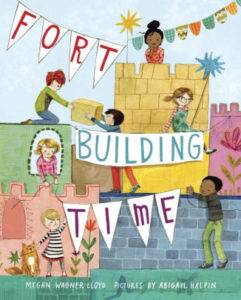 |
Megan Wagner Lloyd’s Fort Building Time (Knopf, 2017) is a picture-book tour of the seasons, with a kid-made fort for each. Winter’s snowball igloo makes way for a spring blanket fort under the trees, then a summer driftwood-and-towel fort at the beach. For ages 3-7. |
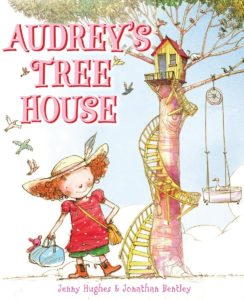 |
By Jenny Hughes, in Audrey’s Treehouse (Scholastic, 2015), Audrey has decided that she’s too big for the house and so needs one of her own – in a tree, with a spiral staircase, a bannister for sliding, a bathtub for snorkeling, and a place to drink tea. For ages 4-8.
|
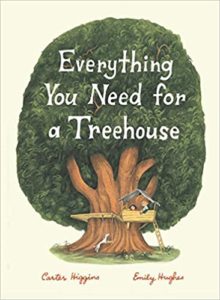 |
By Carter Higgins, Everything You Need for a Treehouse (Chronicle Books, 2018) is a lovely picture book about the wonder, magic, creativity, and imagination that surround treehouses. (“Everything you need for a/treehouse/starts with time/and looking up/and imagining a home/of timber and rafters/in wrangled, gnarled bark.”) For ages 5-8.
|
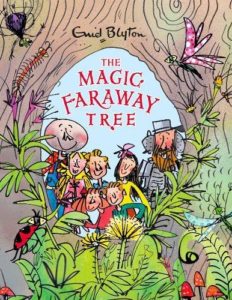 |
In Enid Blyton’s The Magic Faraway Tree (Egmont Books, 2014), three children discover an immense tree in the woods inhabited by pixies, fairies, and other magical people – and reaching into the clouds. From the top of the tree, via ladder, the children can reach any number of strange lands, a different one on each visit. One of a series for ages 5 and up
|
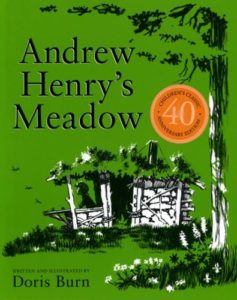 |
In Doris Burn’s Andrew Henry’s Meadow (Philomel, 2012), Andrew Henry, a middle child, is an inventor whose family doesn’t appreciate his contraptions (such as the unfortunate kitchen helicopter) – so he runs away to a meadow where he builds each of his friends an eccentric house suited to their own special interests. For ages 6-9.
|
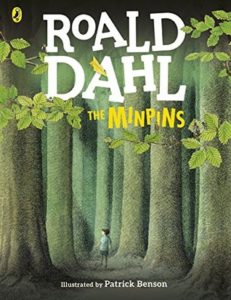 |
In Roald Dahl’s The Minpins (Puffin, 2009), Billy – despite his mother’s warning to stay out of the Forest of Sin, with its scary population of monsters – goes there anyway and meets the tiny Minpins who live in the trees and are menaced by a fire-breathing creature called the Gruncher. For ages 6-10.
|
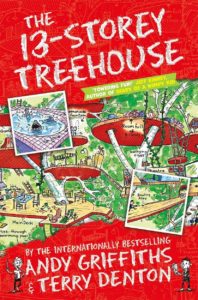 |
By Andy Griffiths, The 13-Story Treehouse (Feiwel & Friends, 2013) – which began with a bowling alley, a see-through swimming pool, shark tanks, a marshmallow machine, and swinging vines – now has several hilarious sequels and is up to well over 100 stories. For ages 6-11.
|
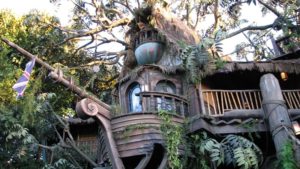 |
By Johann David Wyss, The Swiss Family Robinson – originally published in 1812 – is available in many editions, including simplified kid-friendly versions (see the Great Illustrated Classics or Classic Starts Series). The shipwrecked family ends up living in a truly spectacular treehouse. Check it out in Disney’s old-but-good movie version (1960). Rated G. |
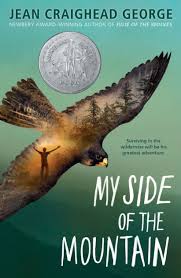 |
In Jean Craighead George’s perennial favorite My Side of the Mountain (Dutton, 1988), young Sam Gribley – miserable in New York City – runs away to the Catskill Mountains, where he makes his home in a hollow tree. A wonderful story of courage, independence, and survival for ages 9-12. |
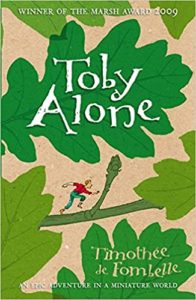 |
In Toby Alone by Timothee de Fombelle (Walker Books, 2009), 13-year-old Toby is just over a millimeter tall – think the point of a pencil – and he and his entire civilization live in a tree. Now his scientist parents have been taken captive and Toby is on the run because the tree is in danger from an evil developer and empire builder. An ecological fantasy for ages 10 and up.
|
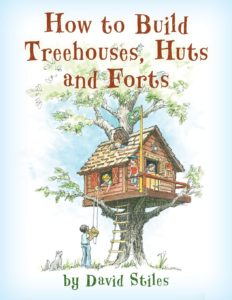 |
Who doesn’t want a treehouse? By David and Jeanie Stiles, Treehouses & Playhouses You Can Build (Gibbs Smith, 2006) is a photo-illustrated do-it-yourself guide for families, with step-by-step illustrations. There’s even a plan for a Treeless Treehouse for those who lack appropriate trees. The kids can help, but this is mostly for grown-ups. Also by Stiles, see How to Build Treehouses, Huts and Forts (Lyons Press, 2018). |
Igloos and Sandcastles
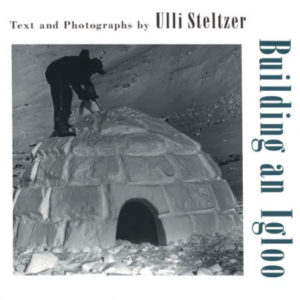 |
Ulli Steltzer’s Building an Igloo (Square Fish, 1999), illustrated with snowy black-and-white photos, follows the process from start to finish. (This is a very professional igloo.) Recommended for ages 4-8, but fun for all. |
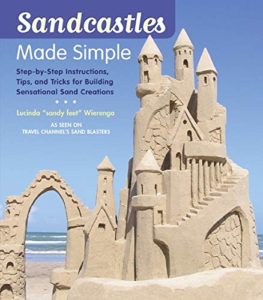 |
Lucinda Wierenga’s Sandcastles Made Simple (Stewart, Tabori, and Chang, 2009) is a 128-page guide to making some truly spectacular sandcastles.
|
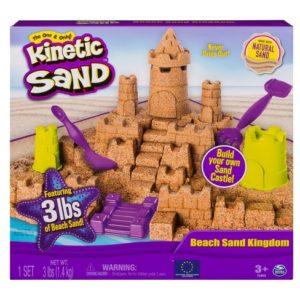 |
Build a sandcastle in the kitchen! Try kinetic sand.
|
|
Make your own kinetic sand! Try this recipe. |
|
|
Long-Lasting Sand Castles and Sturdy Buildings from Inside Science explains why sandcastles stand up. |
